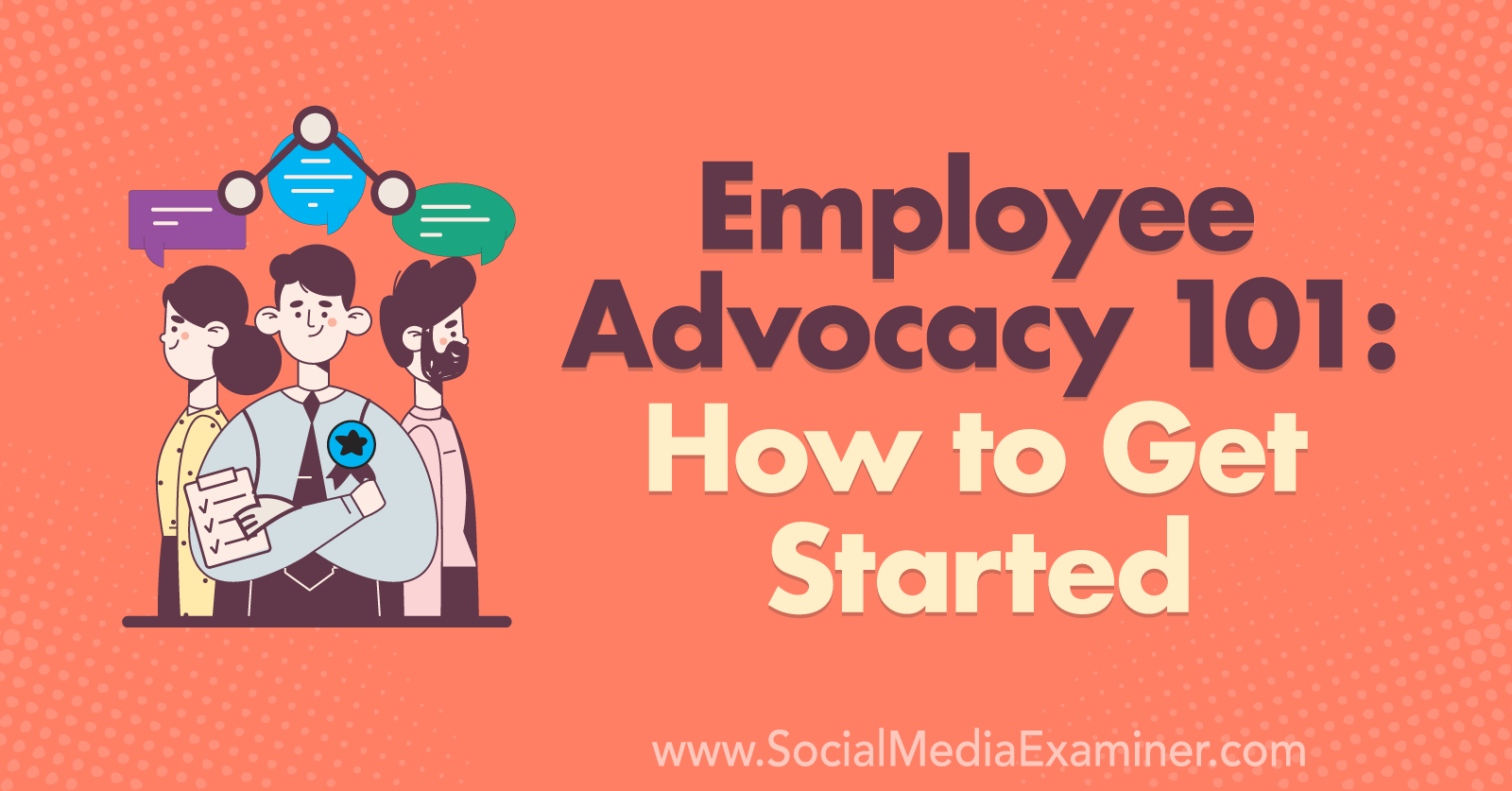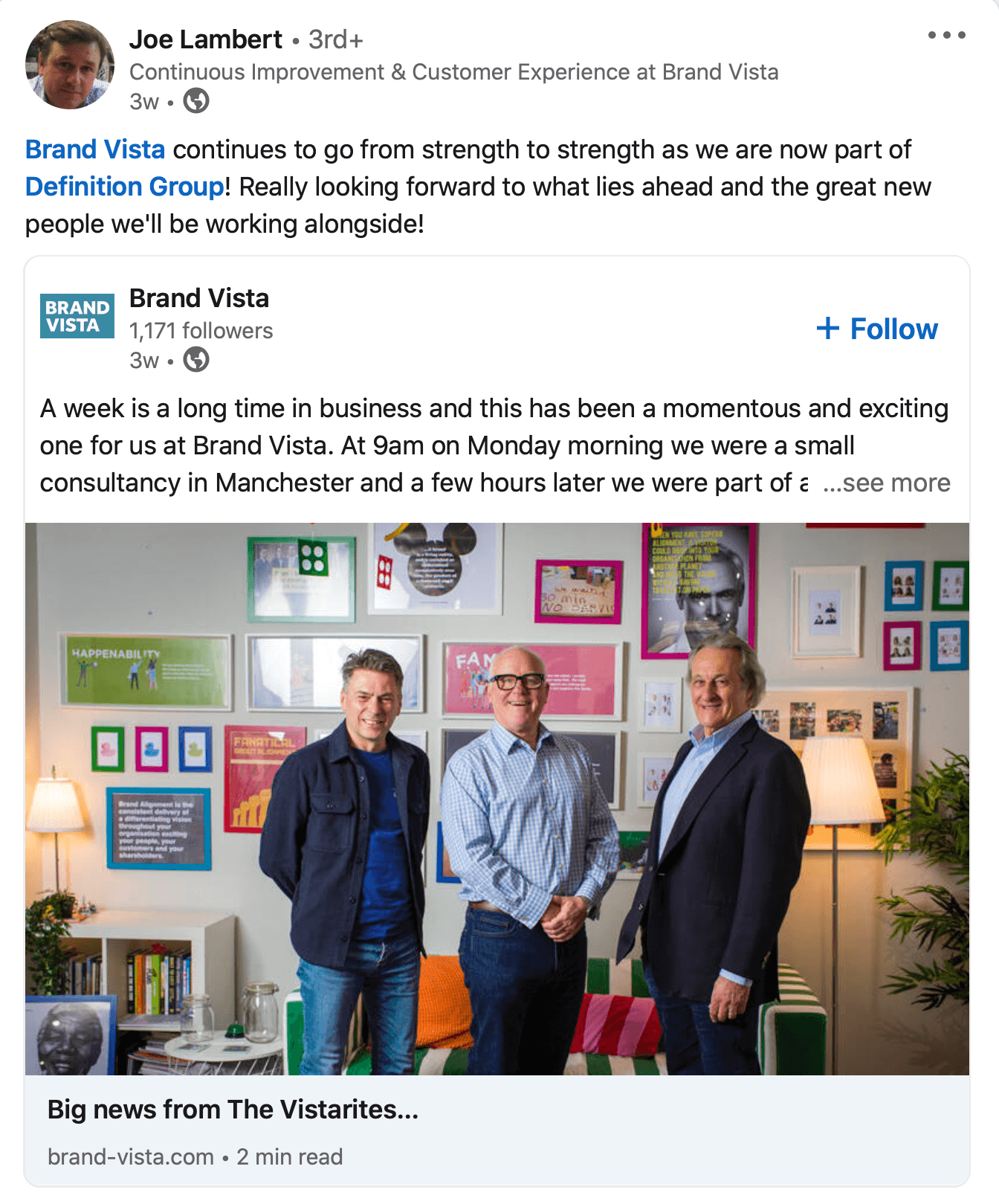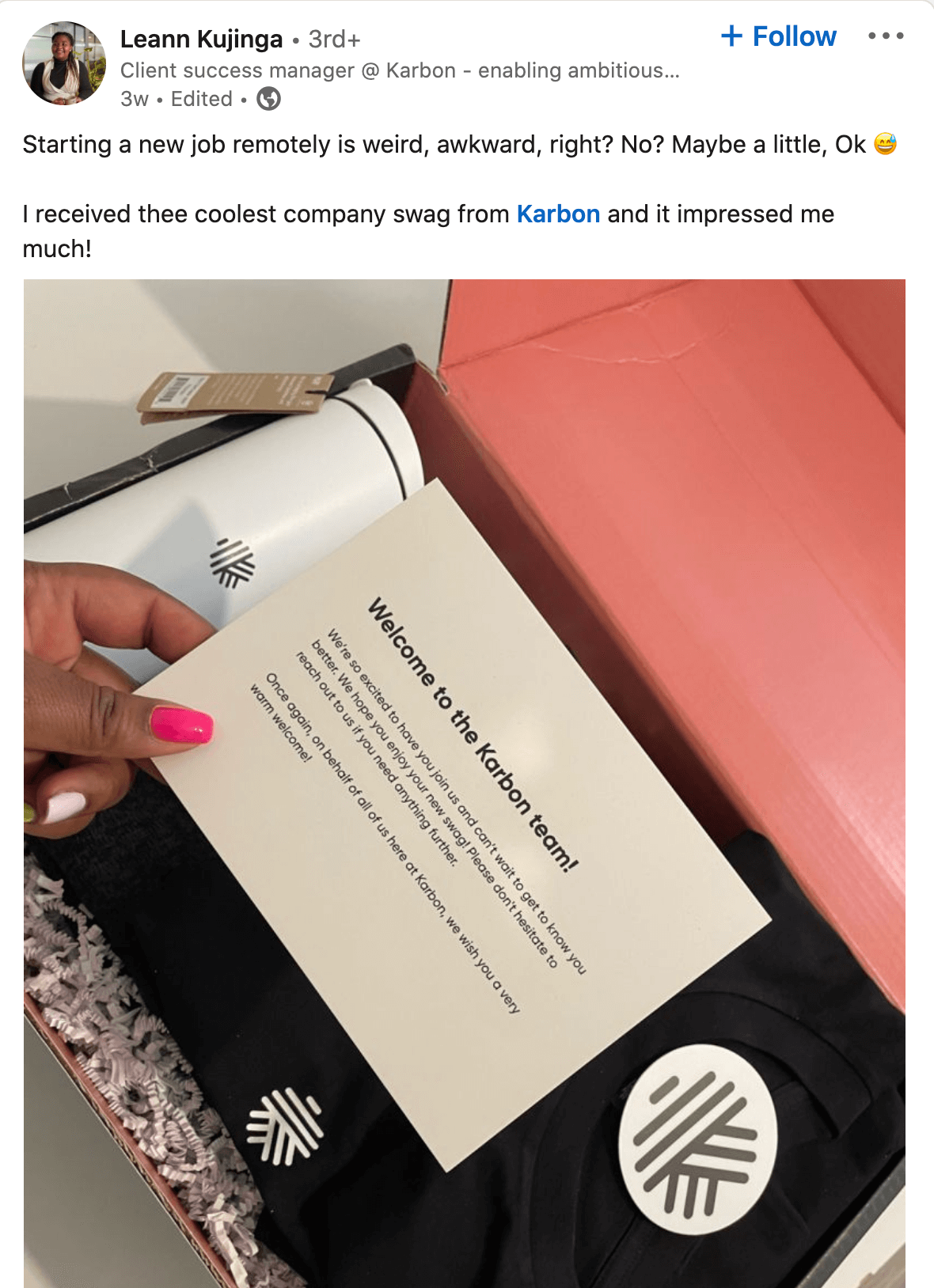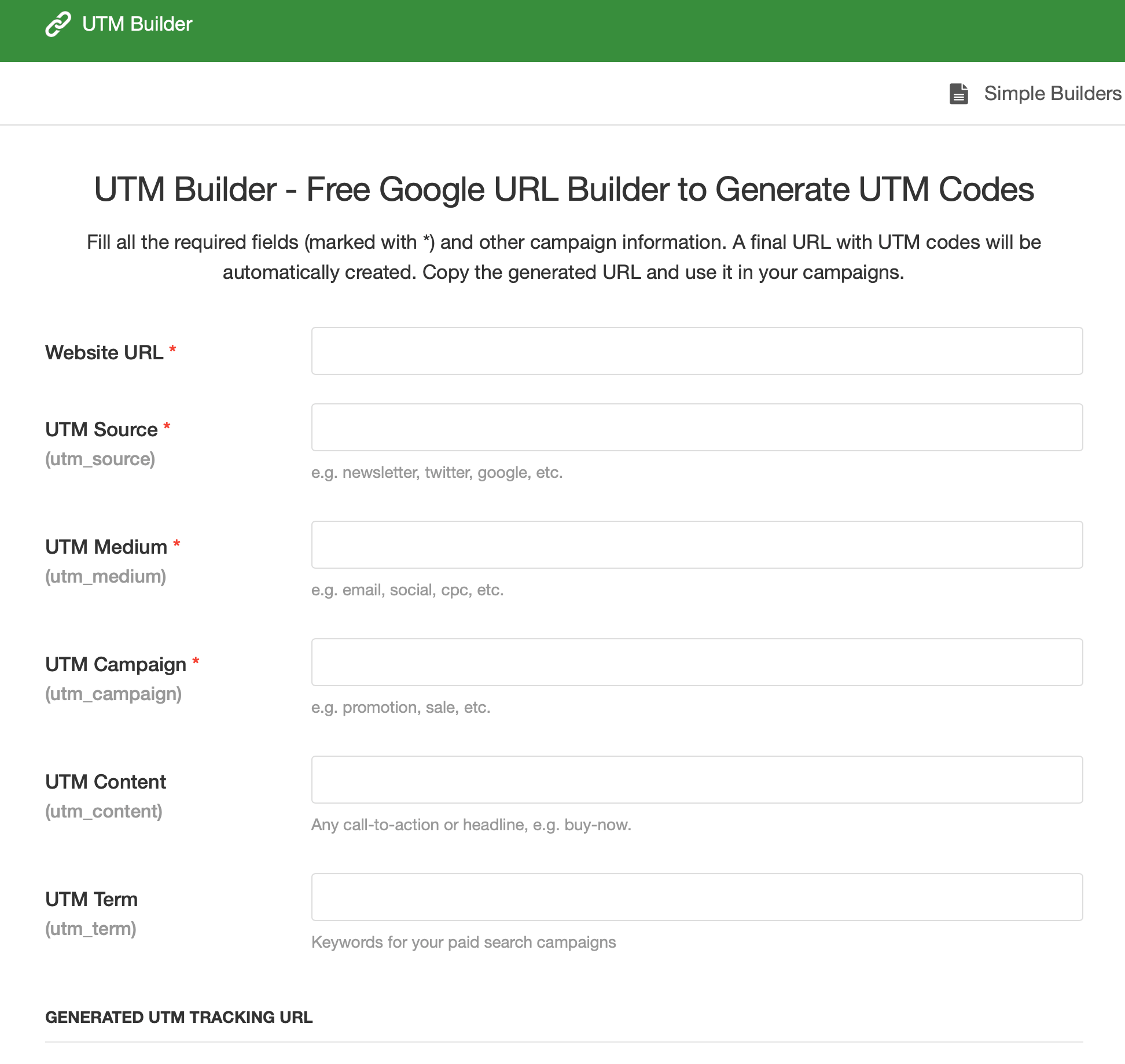Want to boost your reach and improve perception of your business at the same time? Wondering if your employees can help?
In this article, you'll discover the unique benefits of employee advocacy and how to start your own social media advocacy program.

What Is Employee Advocacy?
Employee advocacy is when your employees talk about your brand publicly. In terms of social media, anytime an employee talks about their experience working with you on LinkedIn, Twitter, Facebook, Instagram, Pinterest, Snapchat, TikTok—or even a niche social network such as Strava—there are potential benefits.
An employee advocacy program isn't the same thing as your official social media presence. The key point about employee advocacy is that it comes from the individual workers themselves. Advocates post on their own personal accounts and offer their own unique perspective.
Employee advocacy depends on employee engagement. Ask yourself:
- Are people happy to work here?
- Do they find their work exciting, interesting, or newsworthy?
- Do they take an interest in how the overall business is performing?
Done right, employee advocacy can create a positive feedback loop, where people become more engaged as they learn and share more about your business. There are also plenty of practical benefits on offer for both employers and employees.
Follow this framework to set up an employee advocacy program for your business.
#1: Consider Your Goals
Like any social media strategy, you need to lay out your goals before getting started. If you start without a goal, you'll simply be asking employees to “post more often on social media.” That's not really an exciting or purposeful project.
An employee advocacy program can help you:
- Improve brand reputation. Research into trust levels routinely shows that people trust ordinary, mid-level employees more than CEOs. Word-of-mouth marketing from your team can be highly effective.
- Speed up recruitment. Right now, many businesses are struggling to hire the talent they need. If candidates see that your current employees love their work enough to post about it online, then you can find new hires more quickly. For example, an employee shared this recruitment post on LinkedIn, reaching more potential candidates.

- Increase social media reach. When employees share or react to your posts or tag your official profiles in their posts, it can make a dramatic difference to your reach. LinkedIn estimates that for every six pieces of content an employee shares, they can influence six job views, three company page views, six profile views, two new connections, and one new page follower.
- Improve job satisfaction. Employees report more professional development when they take part in advocacy programs. There's also evidence that people feel more motivated at work when they feel in touch with company news.
- Boost new products and services. Are you getting ready to release something new? Is your team excited about it? They can help kick off your ad campaign. Encourage people to post about their projects (without spilling any sensitive information). For example, beverage brand Olipop has strong employee advocacy on social media. Here, one employee tweets about a new product and another employee retweets the post to give it a boost.

#2: Identify Key Employees
Not every employee will be a good fit for an advocacy program and not every employee will be interested. Some people just aren't into social media, and that's fine. What you want to do is identify employees who:
- Are comfortable on social media
- Have a unique perspective on your business
- Are excited to post about their work
Employee advocacy isn't about finding out who has the most seniority or who's most on-message. Ideally, you want a diverse group of employees posting from every level of the business. Some employees will be keen to post from their first day on the job; others will want reassurance and training before they dive in.

Sometimes the most successful advocate is someone unexpected. You have to be prepared to work with employee advocates in their own style as they emerge.
#3: Create Social Media Guidelines
Some social media managers are nervous about employee advocacy programs. They imagine the worst-case scenarios: employees posting content that's disproportionately negative, off-message, or even offensive.
But at the same time, the most successful advocacy programs are when employees are free to post what they want, without being given a script by the marketing department.
Get World-Class Marketing Training — All Year Long!
Are you facing doubt, uncertainty, or overwhelm? The Social Media Marketing Society can help.
Each month, you’ll receive training from trusted marketing experts, covering everything from AI to organic social marketing. When you join, you’ll also get immediate access to:
- A library of 100+ marketing trainings
- A community of like-minded marketers
- Monthly online community meetups
- Relevant news and trends updates
So how do you compromise? How do you encourage employees to speak freely, without risking your brand safety?
The answer is to create a social media style guide. Use it to clarify what the limits are for employee advocates. For example, do you want to discourage employees from using profanity in their posts? If employees receive customer queries on social media, who should they redirect them to?
It's also helpful to have a list of recommended hashtags, company handles for different social networks, and a specific person to contact if advocates have any questions or problems.

Finally, your social media guide should include advice about how much time you're happy for employees to spend on social media. Advocacy is a part of their job so you shouldn't expect people to post on their own time (although they may choose to). If you don't trust your employees to access social media during their working hours, then an advocacy program probably isn't the right fit for your company.
#4: Support Advocates With Content Ideas
So you want employees to post regularly about your business. And you want them to post in their own words, with their own style, and their own insights.

Discover Proven Marketing Strategies and Tips
Want to go even deeper with your marketing? Check out the Social Media Marketing Podcast! Publishing weekly since 2012, the Social Media Marketing Podcast helps you navigate the constantly changing marketing jungle, with expert interviews from marketing pros.
But don’t let the name fool you. This show is about a lot more than just social media marketing. With over 600 episodes and millions of downloads each year, this show has been a trusted source for marketers for well over a decade.
But… they'll probably need a little help from time to time, as well as inspiration. There may be times when you want employee advocates to focus on specific topics such as a new product launch.
To support your employee advocacy program with content suggestions, try these ideas:
- Send out a regular newsletter with company events, announcements, and recommended content (either your own content or interesting links to discuss).
- Maintain a Slack channel where advocates can share content ideas and bounce ideas off of each other.
- Offer training sessions on social media, cybersecurity, and media relations to give people more confidence and content ideas.
- Create brand assets that advocates can use. You can be creative with this: think photos, videos, or even custom AR filters.
There's also software available to help you create, share, and monitor content in your employee advocacy program. Hootsuite Amplify, Bambu by Sprout Social, and Everyone Social are just a few of the tools on the market.
However, they tend to take a top-down approach, where you create and curate content for employees to select from, instead of encouraging them to post more spontaneously. The corporate approach will be reassuring for some social media managers—especially in larger companies—but don't forget, the most effective employee advocacy is always organic.
#5: Offer Rewards for Employee Advocates
You'll probably find that some employees already post about their work. It happens spontaneously and they're happy to do it. But if you really want to get results from your employee advocacy program by including more people and increasing post frequency, then rewards can help.
For instance, in this LinkedIn post, a new employee shares a box of company swag she received after starting a new job.

Some highly motivating rewards are…
- Company swag. Everyone loves getting presents, including your employees. As a bonus, those branded gifts can be used for more photo opportunities and posts by your employee advocates.
- Competitions. Offer a prize to the employee who gets the most shares each month. This is a fun, low-stress way to set targets for your employee advocacy program and keep the post frequency high.
- Work perks. Extra time off, fun team activities, and even small cash prizes are very effective in advocacy programs. Remember, if you want your employees to be engaged and proud of their work, you'll need to create a happy workplace.
- Transparency. According to both managers and employees, the biggest motivator for employee advocacy is when people understand what they're doing and why they're doing it. Be transparent with your employees about the potential benefits for you and them.
Once again, there are software solutions to help you reward employees who are active on social media. Sociabble uses gamification and rewards to encourage more posts, and you can also use the tool to run regular employee surveys.
#6: Boost Advocate Content
Once you've recruited employee advocates, set up a style guide, and offered them plenty of motivation, you should start to see an effect on your social media reach.
But you can amplify the effect even further by boosting content from your advocates. Reshare, react, and comment from your official social media channels and encourage advocates to interact with each other's posts as much as possible.
You can also give your advocates a boost by featuring them on your brand profile. Run profile takeovers by different employees, host a live Q&A, or share posts featuring a different person each week.

#7: Measure Results and Iterate
Once your employee advocacy program is up and running, make sure you track the results to see if you're achieving your goals and find opportunities to continue to improve it.
It's also a good idea to have regular check-ins with employee advocates themselves. Do they feel that the workload is manageable? Are they happy with the online response they receive? Do they feel adequately rewarded and supported? Don't forget that your advocacy program depends on employees feeling enthusiastic and engaged.
There are several ways you can measure the results from employee advocacy. Some of them are more labor-intensive, while others are simple but require employees to be more formally “plugged in” to advocacy software. Here's a rundown of each:
- Self-reporting. Simply ask advocates to record how many posts they share each month, and how many comments, likes, and shares each post receives.
- Centralized reporting. Alternatively, collect that data yourself. Use social media management programs to capture all of the content that's posted with hashtags or mentions that are part of your advocacy program.
- Use employee advocacy software. Most tools for employee engagement and advocacy include reporting and analytics. However, they may require employees to link their personal accounts to the program, and not everyone will necessarily be comfortable with that.
- Use UTMs. Whichever type of reporting you choose, you should still be using UTMs. When you set up the employee advocacy program, create unique UTMs for each employee, and train advocates to include the UTMs in their posts. You'll be able to track each link click from social media back to a specific employee to see what works and what doesn't.
There are lots of free tools that allow you and your employee advocates to generate UTMs with ease.

Conclusion
Employee advocacy has incredible potential for growing your brand both on- and offline. With the right support, motivation, and feedback, you can work with your employees to reach a wider audience, build your brand reputation, and supercharge their careers.
Get More Advice on Social Media Marketing
- Create a social media content calendar.
- Use buyer personas in your social media marketing.
- Rebrand your business on social media.
Stay Up-to-Date: Get New Marketing Articles Delivered to You!
Don't miss out on upcoming social media marketing insights and strategies! Sign up to receive notifications when we publish new articles on Social Media Examiner. Our expertly crafted content will help you stay ahead of the curve and drive results for your business. Click the link below to sign up now and receive our annual report!
Attention Agency Owners, Brand Marketers, and Consultants

Introducing the Marketing Agency Show–our newest podcast designed to explore the struggles of agency marketers.
Join show host and agency owner, Brooke Sellas, as she interviews agency marketers and digs deep into their biggest challenges. Explore topics like navigating rough economic times, leveraging AI, service diversification, client acquisition, and much more.
Just pull up your favorite podcast app, search for Marketing Agency Show and start listening. Or click the button below for more information.

